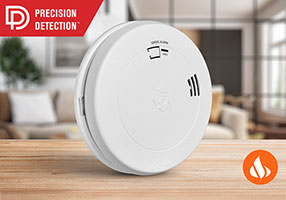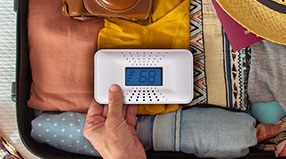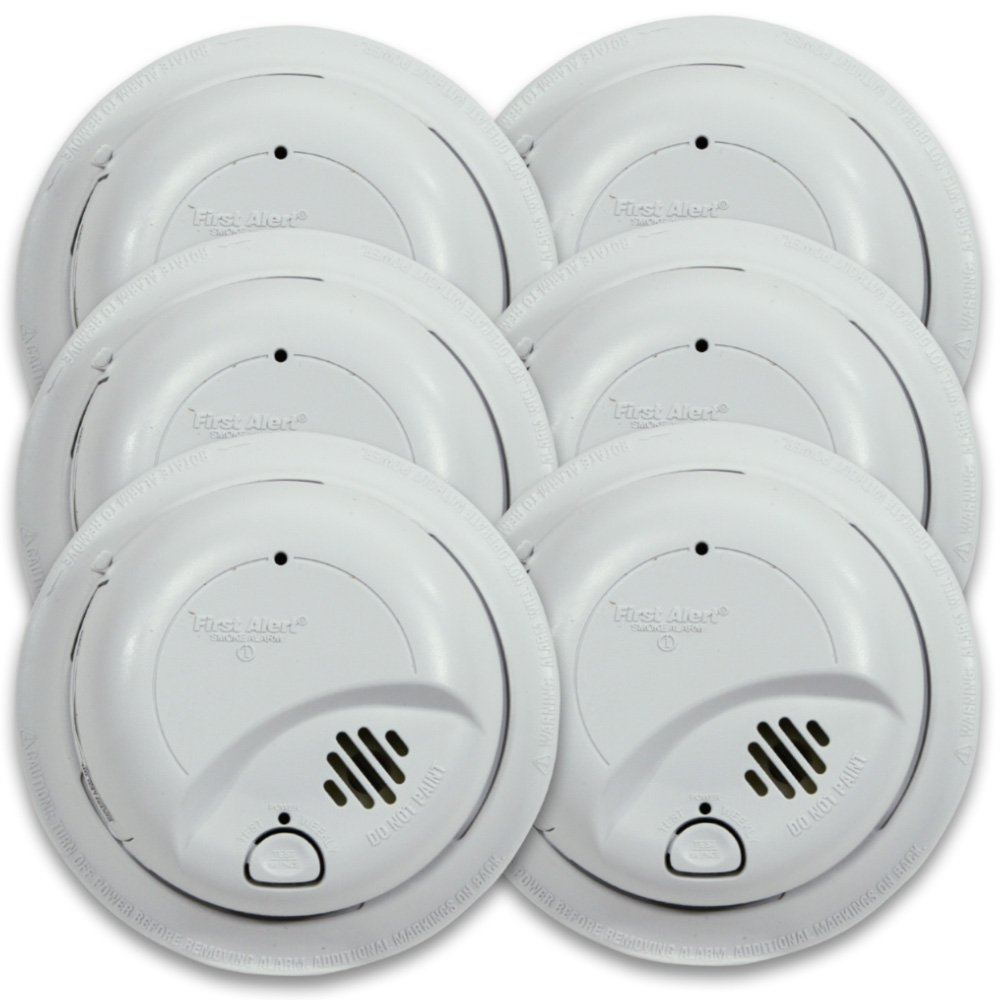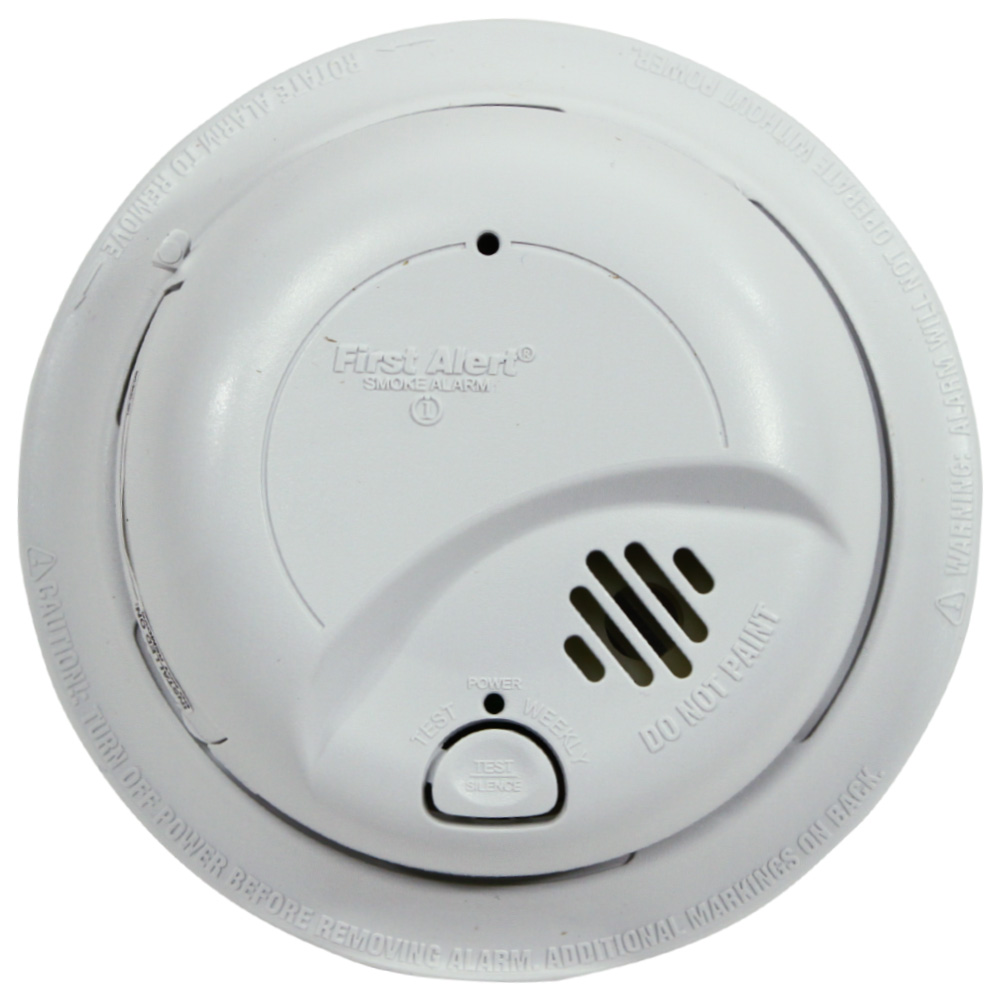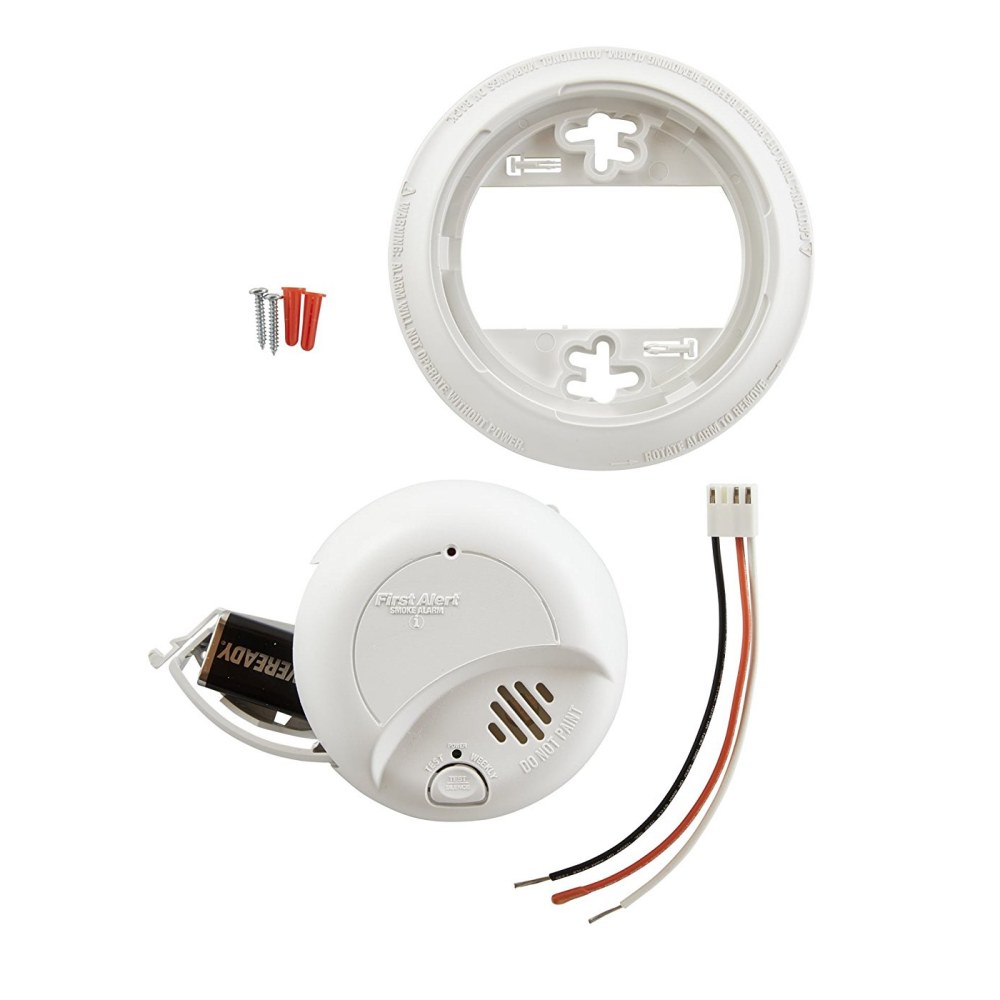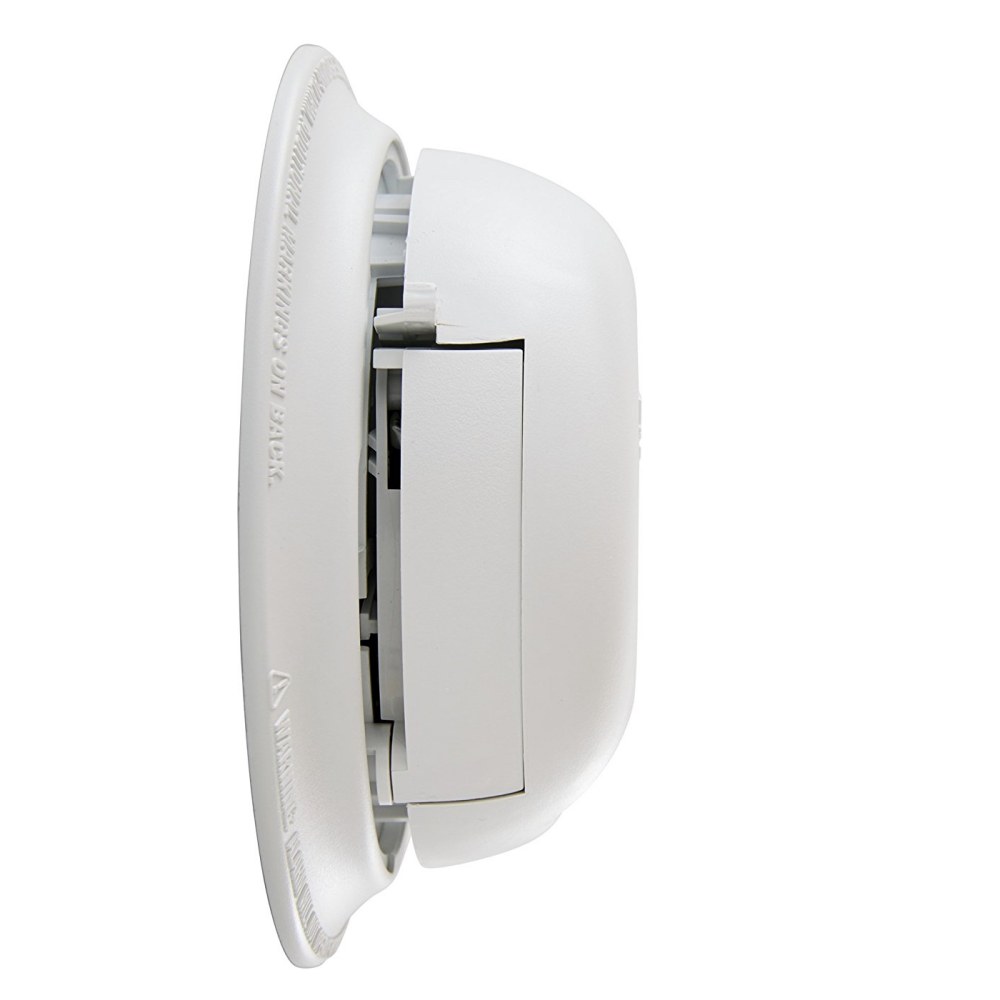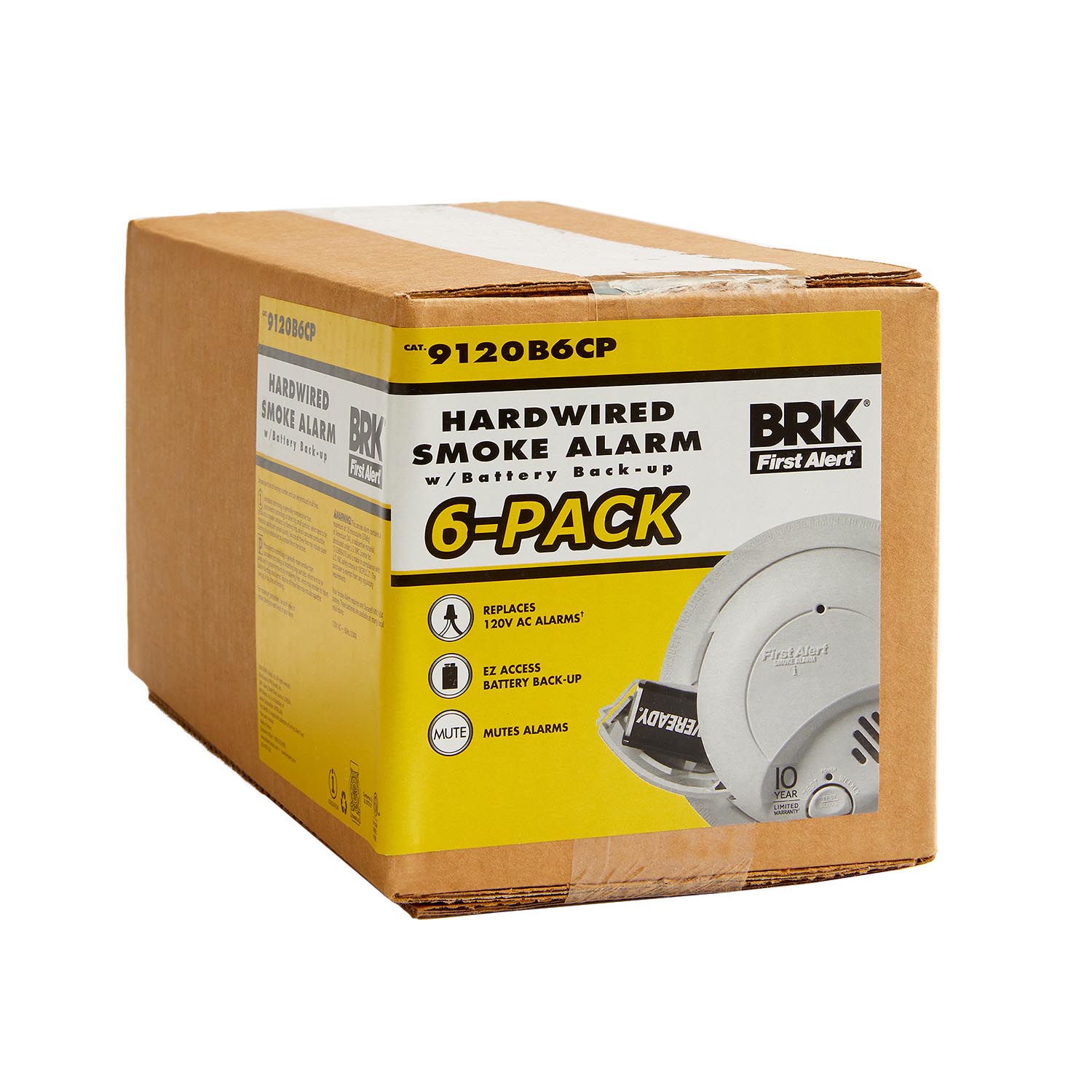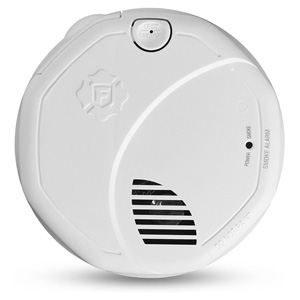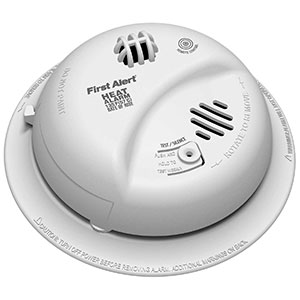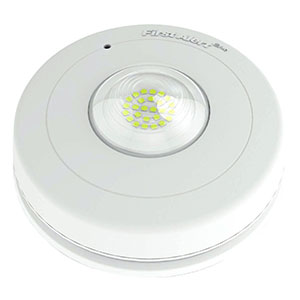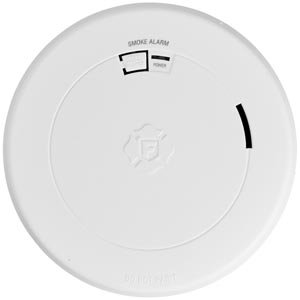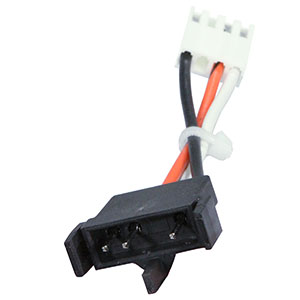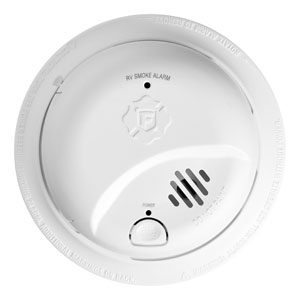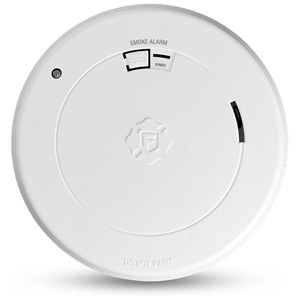First Alert Hardwired Smoke Alarm with Battery Backup (6 pack) - 9120B6CP
Hardwired Smoke Alarm w/ Battery Backup (6 pack):
Designed to help promote household safety, the First Alert 9120B Hardwired Smoke Alarm with Battery Backup can provide a vital early warning of fire. This hardwired smoke detector uses an ionization smoke sensor to reliably detect smoke from hot, fast-flaming fires.
Ionization Sensor Reliably Detects Flaming Fires
The First Alert 9120B Hardwired Smoke Alarm with Battery Backup comes equipped with an ultra-reliable ionization sensor to provide the earliest possible warning of a fast-flaming fire. The sensor is optimized to detect flaming fires, such as those caused by paper, kitchen grease, and other fast-combusting materials.
Gasket-less for Easy Installation
To facilitate hassle-free installation, this smoke alarm features a streamlined mounting system with a gasket-less base. The mounting bracket keeps the alarm secure over a wide rotation range while maintaining perfect alignment. The alarm also comes with a dust cover to keep the unit clean during construction. AC-powered smoke alarms must be installed in accordance with all local electrical codes.
Battery Backup for Detection During a Power Outage
This smoke alarm is designed for hardwired installation, but it also features a battery backup that helps ensure continued functionality in the event of a power outage. The unit comes with a 9-volt battery and features a pivoting, easy-to-access battery drawer that allows you to replace the battery without dismounting the alarm.
Works in Tandem with Other First Alert Alarms
In addition to functioning independently, this smoke alarm can also integrate with up to 12 other First Alert or BRK hardwired alarms for coverage of larger spaces. It also integrates with up to six other compatible devices, such as bells, horns, and repeaters. If one alarm in the series is triggered, they will all sound. The alarm features a latching indicator to identify which unit triggered the alarm, alerting you to the area of danger.
First Alert Smoke Alarm 9120B6CP
Recommended replacement for the following obsolete models:
BRK 4120B
BRK 4120SB
BRK 86RAC
First Alert SA4120B
First Alert SA4121B
First Alert SA4919B
- Power Source: Hardwired
- Battery Backup: 9V
- Sensor: Ionization
- Interconnect: Can be linked with up to 18 units (12 Smoke, 6 CO/Heat/Relay)
- Smart Technology:Helps reduce nuisance alarms
- Noise Output: 85 dB in a T3 Pattern
- Single Button: One press to silence and test alarm
- Easy Installation: Perfect Mount System includes Gasketless Base
- Tamper Resistant: Includes Locking Pins
- Dust Cover: Keeps alarm clean during construction
- Improved UV Resistance: Keeps alarm from discoloring over time
- Standards: UL 217
- Warranty: 10 Year Limited
- Product Dimensions (LxWxH): 5.6 x 1.9 x 5.6 in.
- Product Weight: .6 lbs.
- Smoke particles of varying number and size are produced in all fires. For maximum protection, use both ionization and photoelectric sensing technologies. Ionization alarms are generally more sensitive to fast flaming fires and photoelectric alarms are generally more sensitive to smoldering fires.
If you are interested in ordering a large quantity of items you may qualify for volume pricing discounts. Volume Discount Pricing is a great way for customers to save big on large, bulk orders of most items available in our store. Please send a bulk order request to our friendly sales staff so they may create a quote and provide personal service for your order! You will receive a response within 1-2 business days and our office hours are Monday through Friday, 8am-5pm CST.
- Let us know what products & the quantities you are interested in.
- Get a detailed quote from a dedicated sales rep.
- Our warehouse ships directly to you.
- You enjoy the savings & are now a preferred customer.

